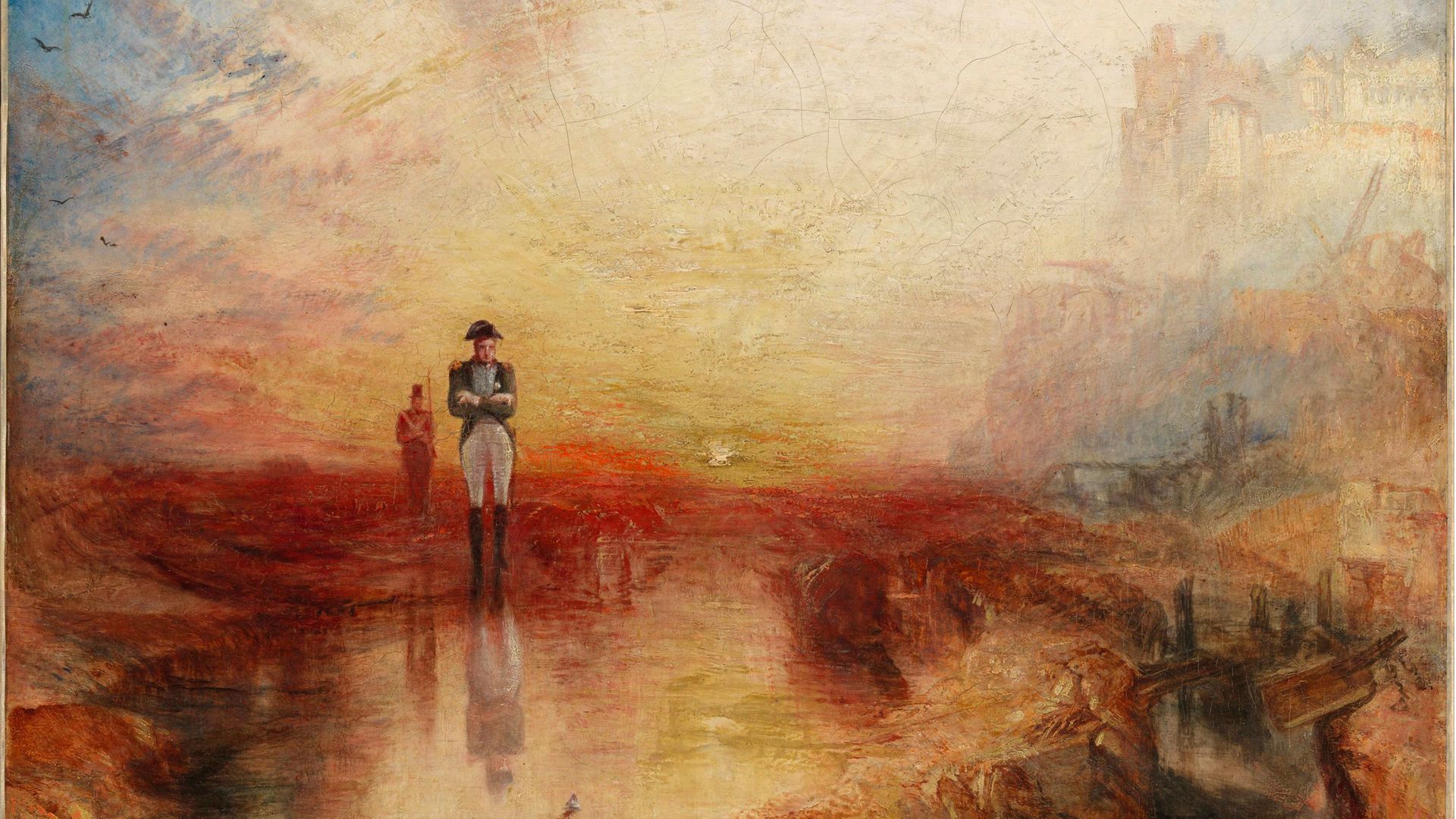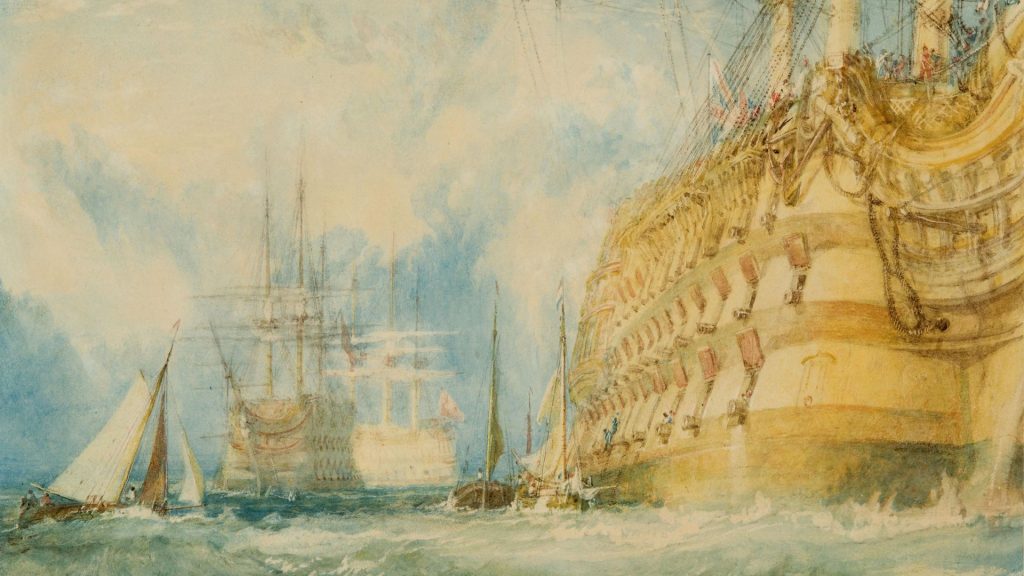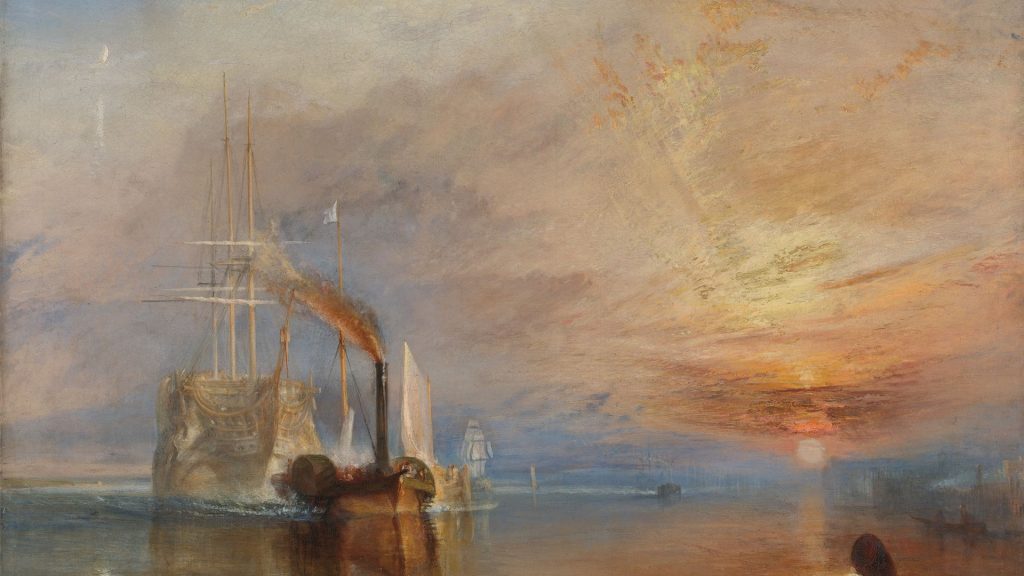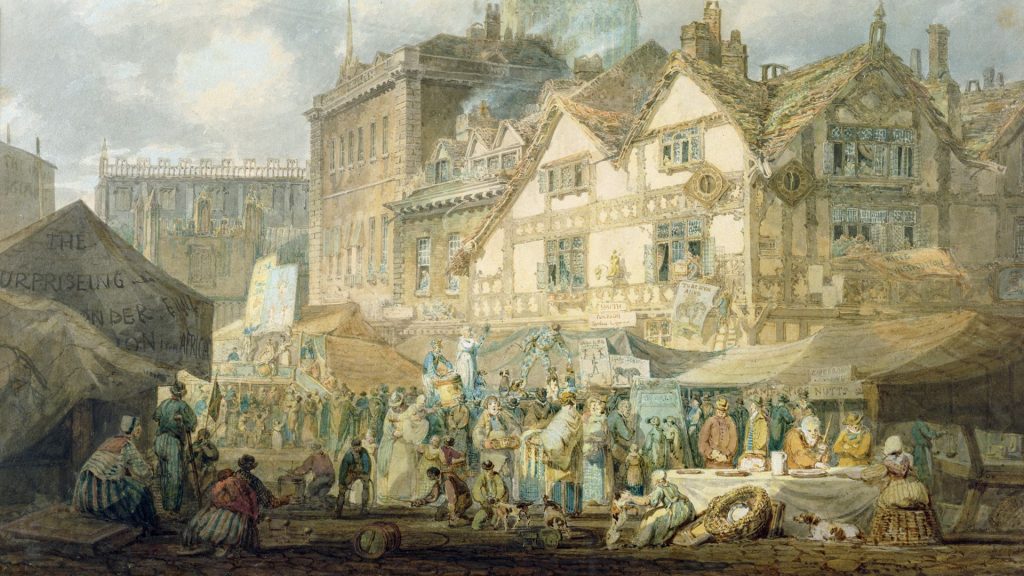
The paintings of JMW Turner tell the fast-paced story of the modern age bursting into being. Claudia Pritchard reports on a new exhibition which recounts this gripping tale.
At first glance, the silvery mound of fresh-caught fish in the foreground looks ready for pan and the plate, but the pilchards in Joseph Mallord William Turner’s St Mawes, Cornwall (1824) tell a less appetising story, which the artist retold in several artworks. Caught for export but left to rot, they will be discarded, for trade with the rest of Europe has foundered on the Napoleonic wars, and that market is closed.
That Britain should still be bickering over a few sprats 200 years on might have surprised the artist Turner, who lived and revelled in a world of rapid change and, for many, improvement.
The Reform Act, which gave voting rights to more people than ever before, the abolition of slavery, and the rise of steam and of the phenomenal power it unleashed on land and sea all played out in front of his acute vision.
At Tate Britain, which houses 300 paintings and 30,000 drawings by Turner, there is a permanent opportunity to see a selections of works year-round.
But occasional themed exhibitions show otherwise rarely seen works and notable loans, as well as Tate’s own big hitters, and in Turner’s Modern World these are viewed through the prism of the artist’s response to fast-moving events.
But for his prodigious talent for drawing and painting – born in 1775 he sold his first work aged 11 and exhibited at the Royal Academy at 15 – Turner would have made a thorough and dogged reporter.
He would dash to the scene of newsworthy events, such as the blaze at the Pantheon theatre in London’s Oxford Street in 1792, or the hugely destructive fire at the Palace of Westminster in 1834.
When Nelson’s body was brought ashore at Sheerness after the Battle of Trafalgar in 1805, Turner boarded the ship, shinned up the rigging and interviewed the crew about the admiral’s mortal wounding on deck, subject of his vast The Battle of Trafalgar, as Seen from the Mizen Starboard Shrouds of the Victory (1806-08).

Perhaps his most famous news picture of all is The Fighting Temeraire Tugged to her Last Berth To Be Broken Up (1839), on loan to the Tate from the National Gallery. But the journalist gives way to the poet, not for the first time, as Turner rearranges the elements to make the best picture.
Hauled upriver from Sheerness to be broken up in Rotherhithe on the south bank of the Thames, the stately, ghostly first-rater dwarfs the steam-powered tug at its sickly prow.
The sun appears to set symbolically on the age of sail, but it is in the east, not the west. Is this, in fact, the dawn of steam? Probably not: it’s just a better composition. In real life, the ship retired from Nelson’s navy would already have been demasted before being sold for scrap.
But invention was one of Turner’s many gifts. He would maintain, for example that he had lashed himself to the mast of the steamer Ariel to paint Snow Storm – Steam-Boat off a Harbour’s Mouth (exhibited 1842), but no such vessel operated out of Harwich, as he claimed.
No matter. Turner had served his apprenticeship as a rapporteur travelling the length and breadth of the country early in his career making topographical drawings and watercolours.
An irrepressible traveller, he soon rolled out the map of Europe too, undertaking journeys by coach that were long, uncomfortable and sometimes dangerous.
In 1820 he was among passengers in a carriage that overturned in the snow, crossing the French Alps. Men, women and children were obliged to climb to safety through the window, and Turner having sketched the scene, made his way to the next inn on foot.
Huge advances in faster – and, usually, safer – transport in Turner’s long lifetime (he died in 1851) are summed up in Rain, Steam and Speed (1844).
This is another National Gallery loan, in which you can all but hear the hiss and roar of the train crossing Isambard Kingdom Brunel’s bridge at Maidenhead.

Enveloped in mist and steam co-mingled, the locomotive is capable of a giddying 60 miles per hour across a country now bound together in a single time zone, thanks to the new Great Western Railway timetable.
The mighty engine is the equivalent on land of the Temeraire’s doughty escort, Turner making no great distinction at this point between dry land and water.
As a boy, raised in Covent Garden by his barber father in the heart of the active art market, from an early age Turner would have seen great marine scenes in the windows of selling galleries.
Flemish artists, who were the masters of this dramatic genre, settled in London, on hand to supply enthusiastic collectors. This tradition, coupled with Turner’s gift for painting steam, rain, mist and spray, led to the great, late paintings awash with water.
In June 1840, the World Anti-Slavery Convention met in London. Turner’s new painting Slave Ship (Slavers Throwing Overboard the Dead and Dying – Typhoon Coming On) was on view at the Royal Academy. An unmistakable statement about man’s inhumanity, it shows slavers jettisoning their human cargo before being apprehended by British ships.

In common with many of his time, the painter had moved from shrewd if unthinking investment in schemes that thrived on slavery to outright opposition. The painting is today too fragile to travel to London from the Museum of Fine Arts, Boston. But so important does curator David Blayney Brown consider it as an example of Turner’s response to his times, that a high-quality photographic reproduction hangs in its stead in the exhibition.
The dead and dying flail in the broiling sea, dragged down by their chains, as a livid sky rages behind the shameful vessel.
While Turner’s modernity arguably lies primarily in his enthusiastic adoption of improved transport and, usefully, newly available pigments, this exhibition makes a case for Turner as political commentator.
But the fish rotting on the beach, the working people in the foreground of great scenes, are small fry in a world which Turner strove to encapsulate in vast canvases. And these, for all their familiarity in many cases, still have the power to take your breath away.










